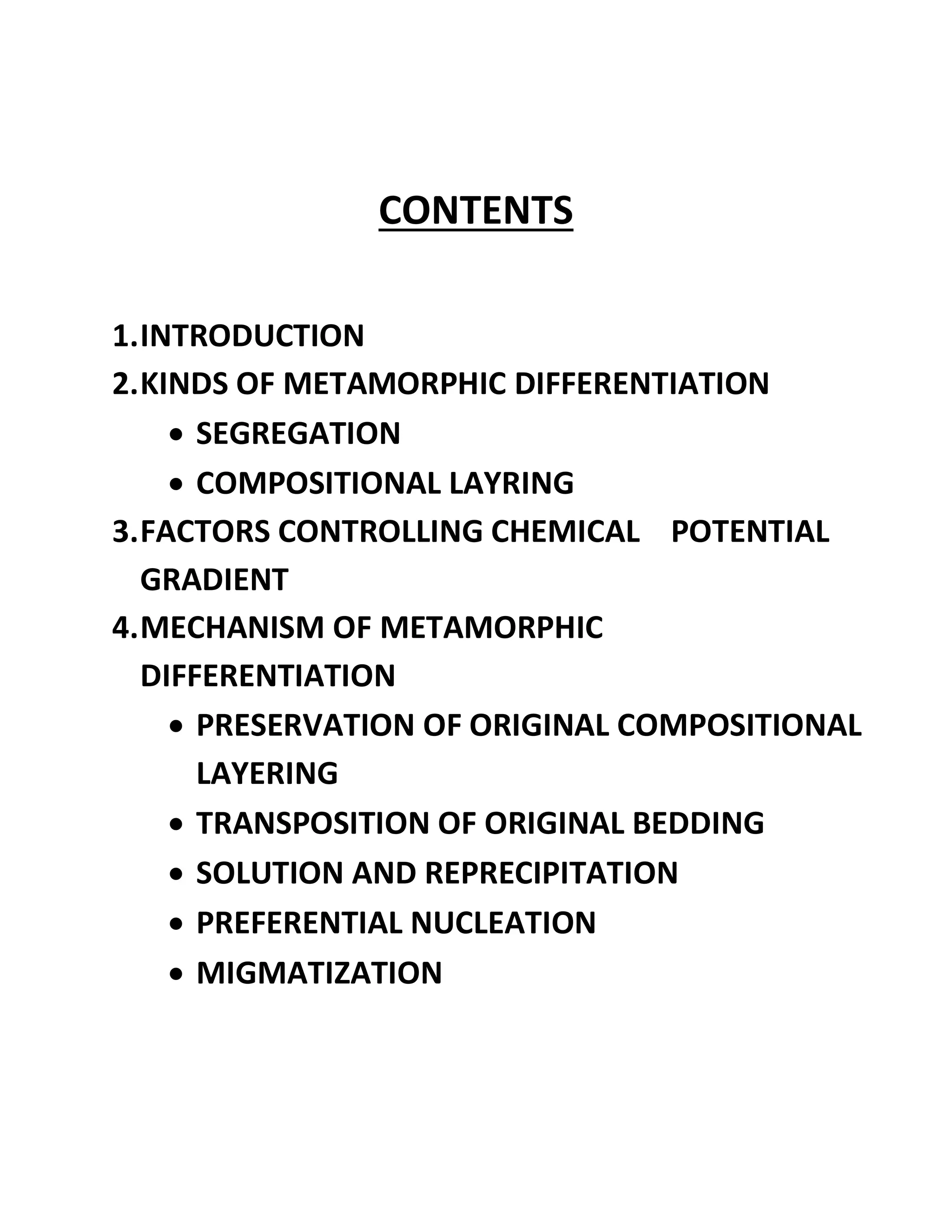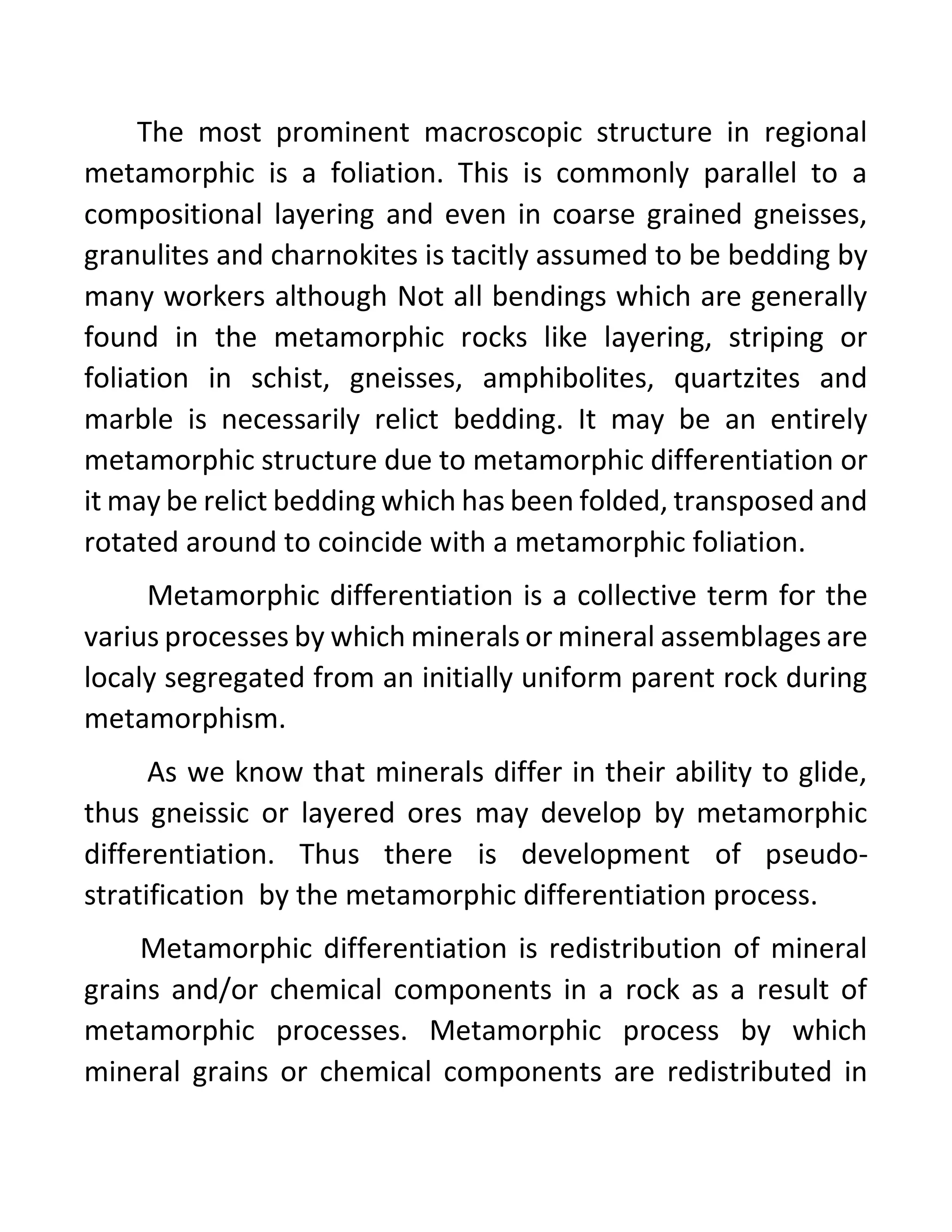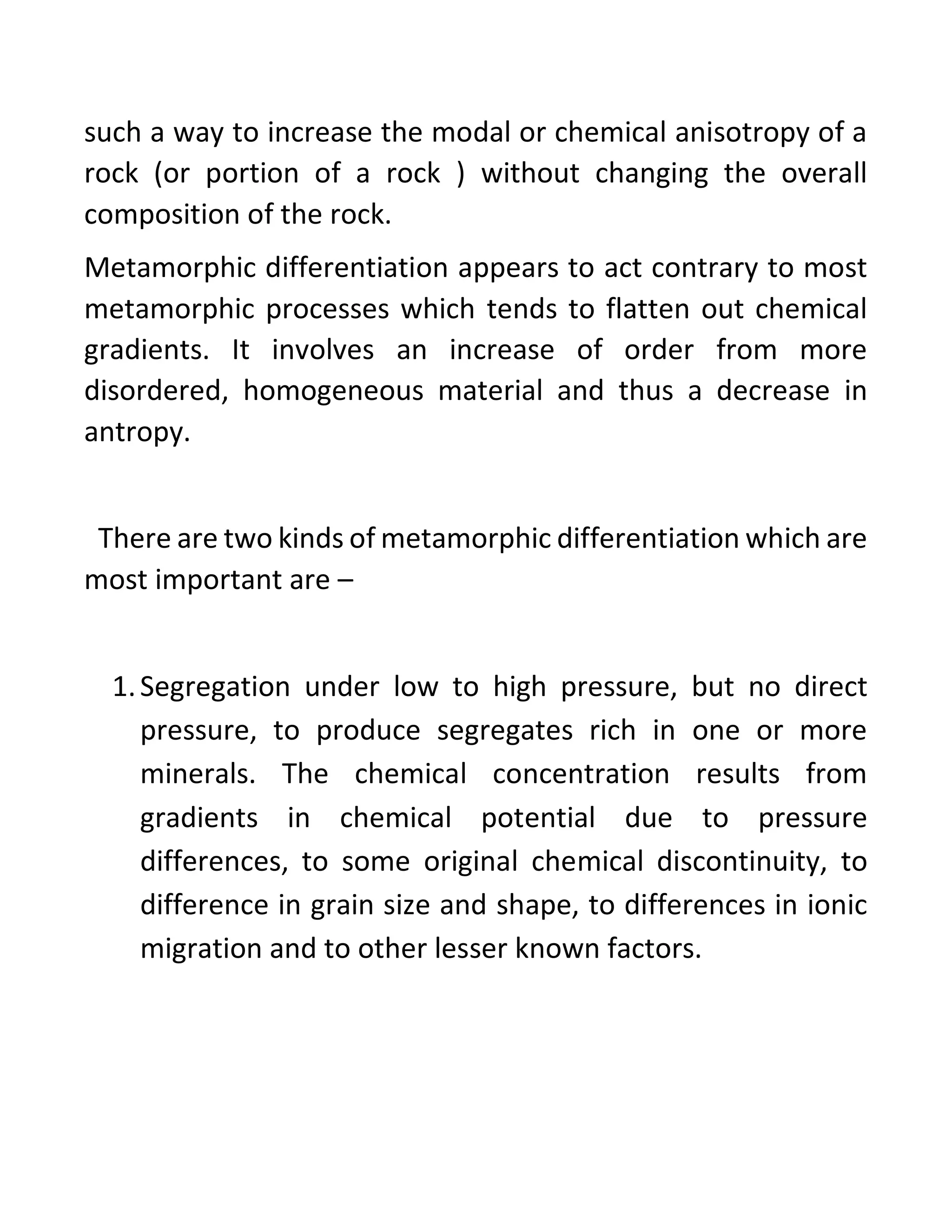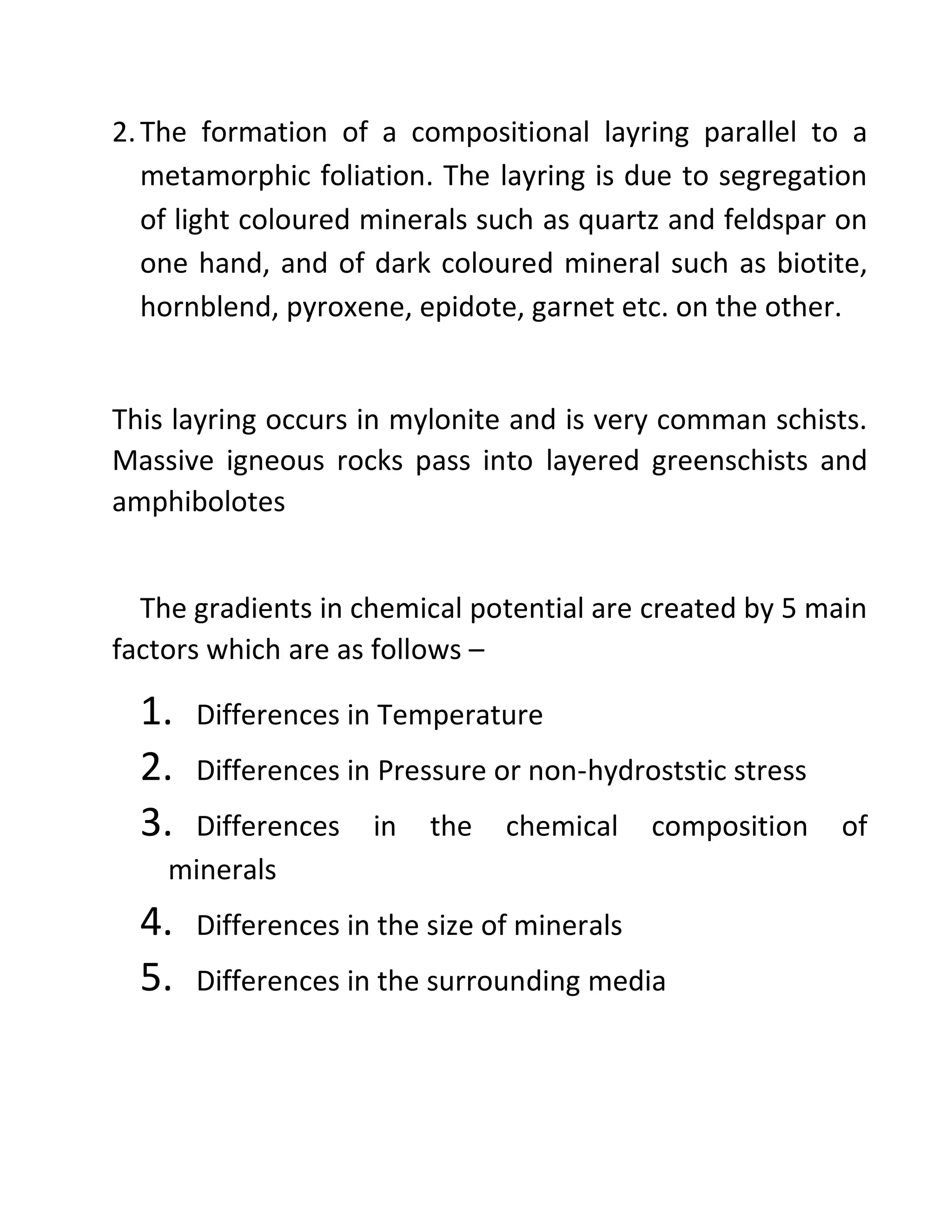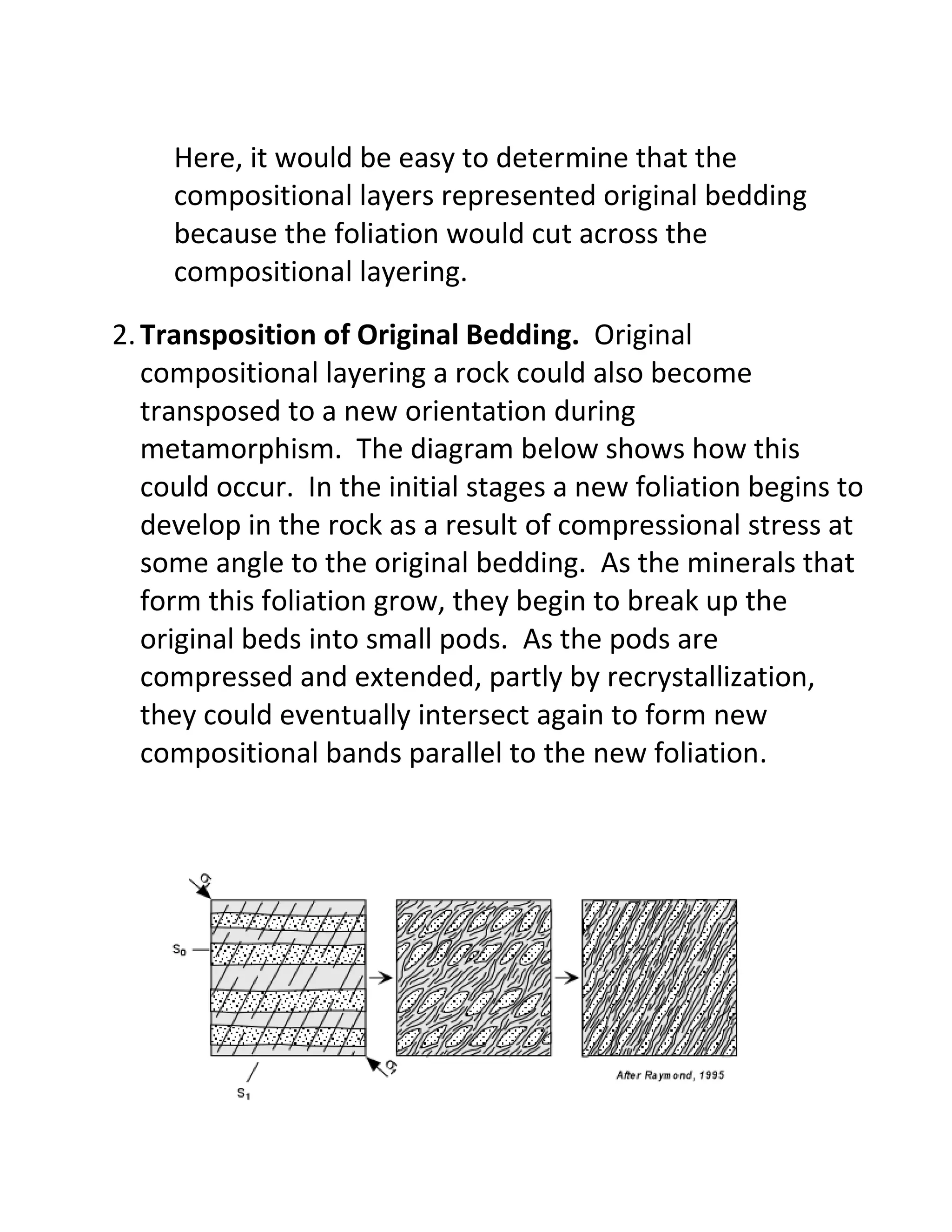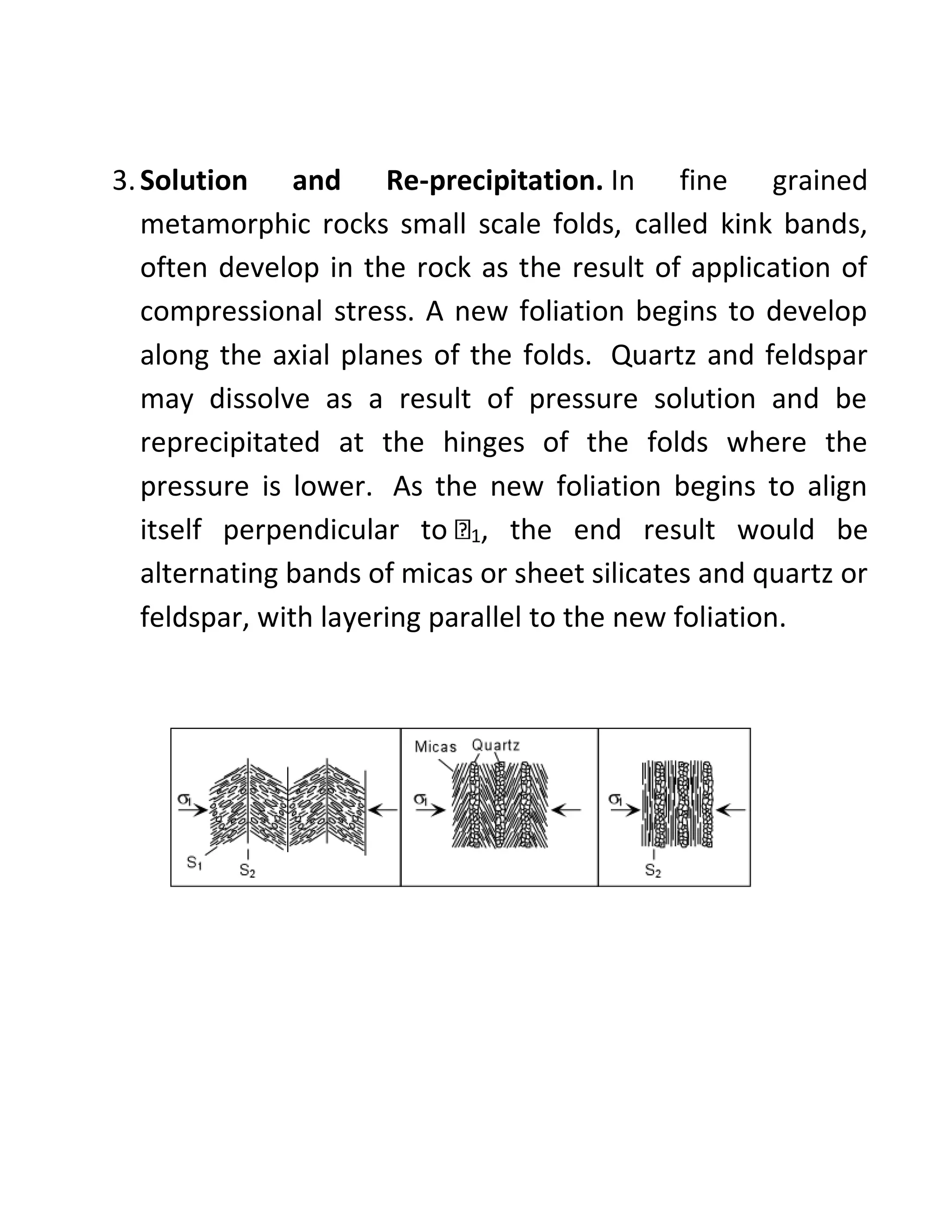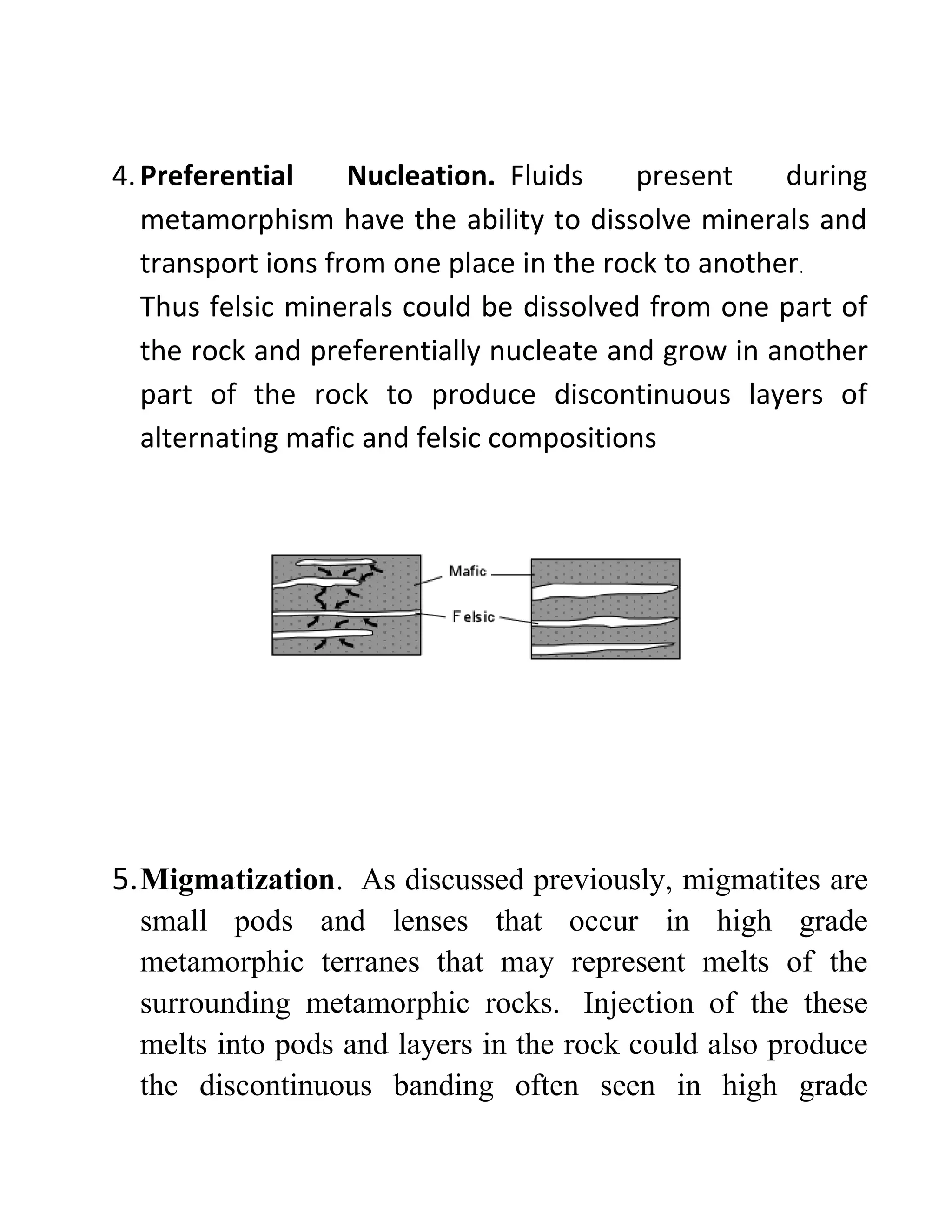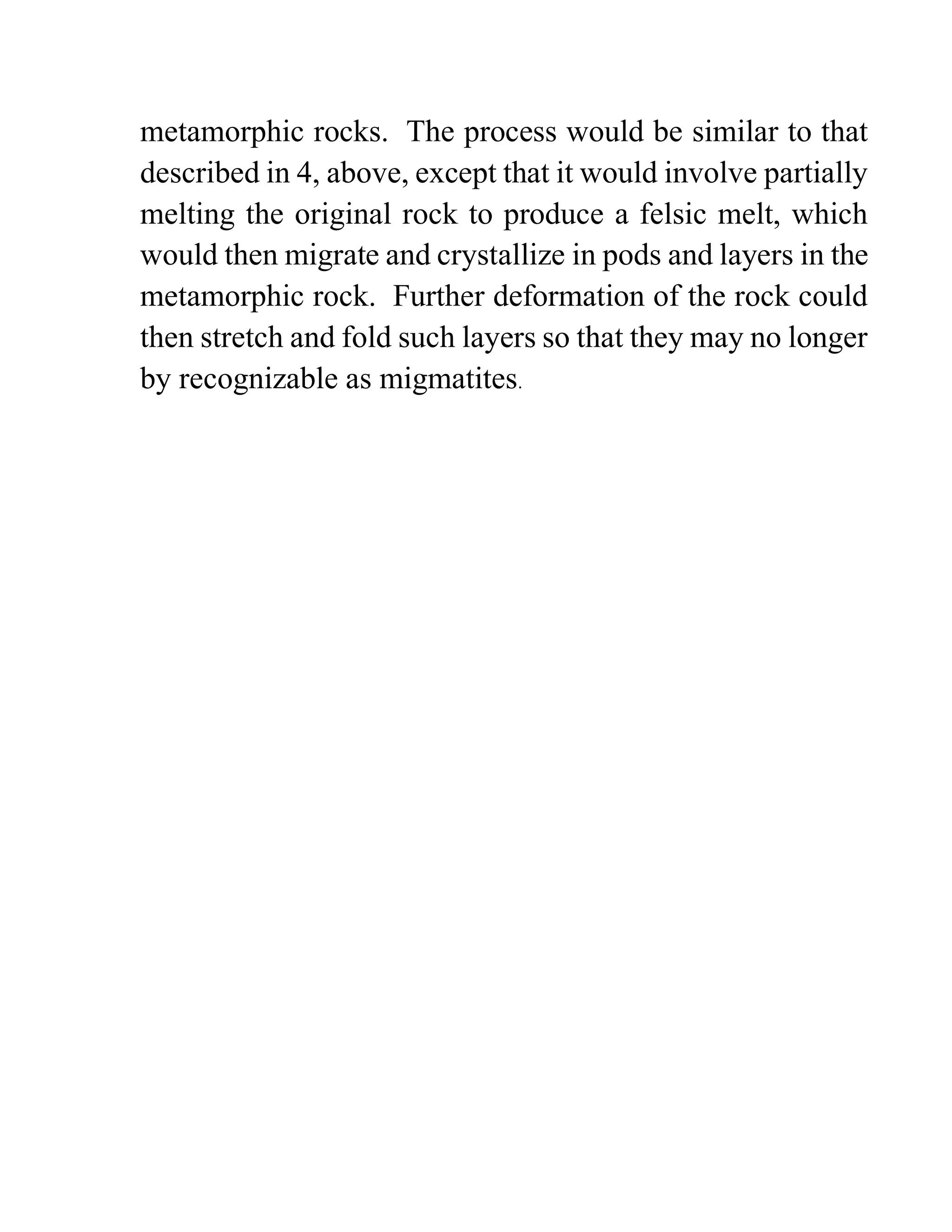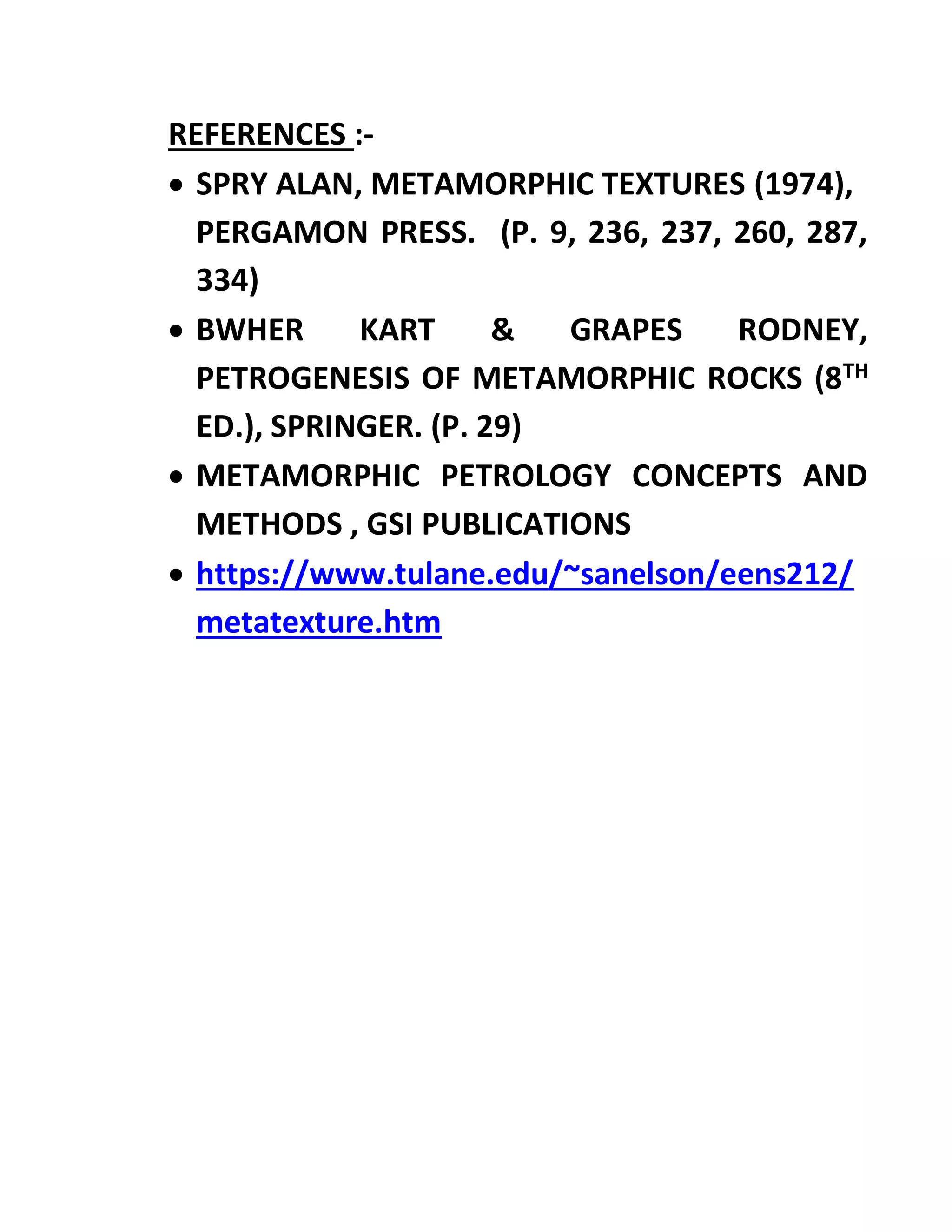This document discusses metamorphic differentiation, which refers to the redistribution of mineral grains or chemical components within a rock during metamorphism. There are two main types - segregation, which produces mineral-rich layers, and compositional layering parallel to metamorphic foliation. Gradients in chemical potential that drive differentiation are created by factors like temperature differences, pressure differences, mineral composition, mineral size, and the surrounding media. Mechanisms of differentiation include preserving original layering, transposing original bedding, solution and reprecipitation of minerals, preferential nucleation of minerals in fluids, and migmatization involving partial melting.

